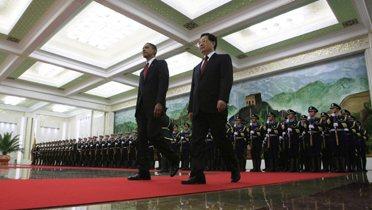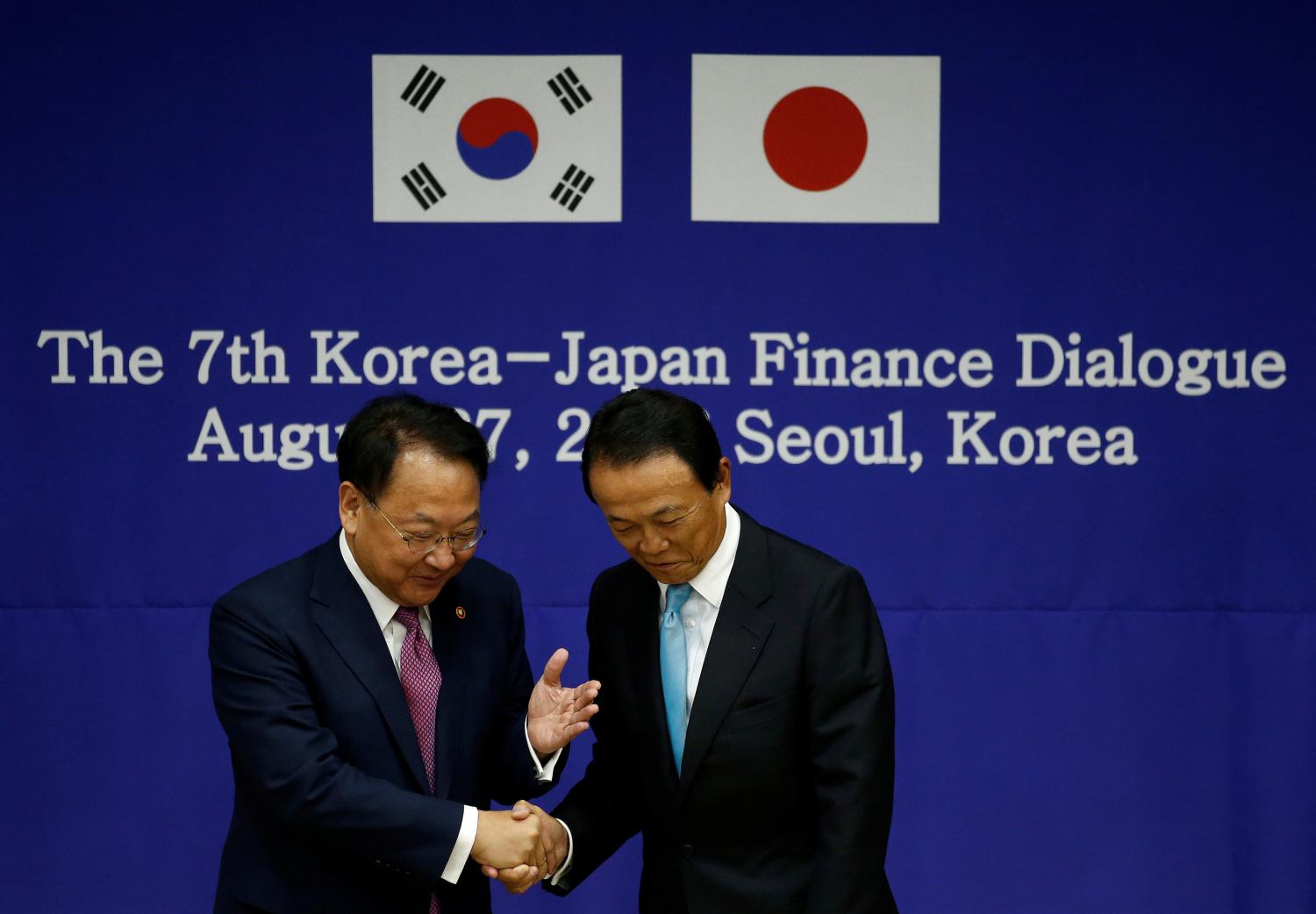What a difference a year makes. In November 2009 President Obama paid a state visit to China, which will be reciprocated on January 19, 2011 with a visit to the White House by Hu Jintao—China’s President, Communist Party General Secretary, and Central Military Commission Chairman.
A year ago President Obama’s visit to China came amid high expectations[1] for a strong bilateral and global partnership between the United States and China, but in the year since that visit Sino-American relations have been extremely strained—the worst in at least a decade. President Hu’s pending visit offers an important opportunity to stabilize the hemorrhaging relationship. Observers all over the world wonder if this will occur and, if so, how long will the new stability last?
Sources of Instability
While a number of issues have contributed to the instability in the relationship, in retrospect, the deterioration began with the Chinese (over)management of the Obama visit to Shanghai and Beijing. Recall for a moment how that visit went (I was living in Beijing at the time and witnessed it firsthand).
The promised free-flowing town hall presidential exchange with “students,” much ballyhooed by the White House and U.S. Embassy, proved to be a stage-managed event with carefully selected Communist Youth League members who posed pre-screened and politically correct questions. Despite repeated U.S. government requests to broadcast the event on nationwide television, Chinese authorities never announced a broadcast ahead of time, airing it only locally over Shanghai television and a Xinhua News Agency webcast (so that nobody knew in advance to watch it). The U.S. was not told until the last second that it would be aired at all. No other opportunities were provided for President Obama to meet the Chinese people during the visit. Police prevented crowds of ordinary Chinese from forming on the streets, and citizens were permitted nowhere near the president’s motorcade. No meetings with human rights activists or lawyers were permitted, and no visits to NGOs, factories, or companies were scheduled. There was not even the usual speech to the American Chamber of Commerce. The joint presidential press conference in the end proved to be a “media briefing” at which reporters were not allowed to ask questions (they had previously been required to submit questions for screening). Even the one newspaper interview permitted for President Obama (with Southern Weekend) was censored in publication. The Chinese government completely controlled the guest list for the state banquet in the Great Hall of the People. All of the president’s time was consumed in formal meetings and meals with Chinese leaders. Even the obligatory “photo-op” visit to the Great Wall was arranged on the last day in such a way as to (intentionally) consume five hours of travel, so that other events could not be scheduled.
Throughout the visit, the Chinese government was obsessed with controlling the president’s time and agenda, lest he say or do something that might embarrass the Chinese regime. The Chinese side sought to maximize the projection of images to their own people of the two presidents holding statesman-like discussions while minimizing any chances of President Obama directly reaching the Chinese people in person or via his vaunted oratorical skills. Nothing was left to chance. This visit was an example of “summit diplomacy with Chinese characteristics.”
One wonders if the opposite of this were to occur to President Hu in the United States? How would Hu do in an unscripted PBS Newsmaker interview with Jim Lehrer on live television (as many visiting foreign leaders do)? What would he say in an unscripted freewheeling press conference in the East Room of the White House? What would happen if individuals with whom the Chinese government did not agree (exiled Chinese dissidents or American critics) were invited to the White House state dinner? What would happen if Hu had to “meet and greet” average Americans? What if he had to witness public demonstrations over China’s human rights record, the Falun Gong, Tibet, Taiwan, or other sensitive subjects? It is doubtful that any of these things will happen to President Hu, and the Chinese trip planners go to extraordinary lengths to ensure that they do not occur. But will the Obama administration accede to such Chinese-style summit management, as it did a year ago in Beijing and Shanghai?
According to advance media reports, Hu will visit the Chicago area after Washington and is expected to tour a Chinese-invested auto parts plant, a joint U.S.-China clean energy project, and a secondary school where Chinese is taught with assistance of the Chinese government—events all carefully selected to highlight China’s positive role in the United States. Like the 21 gun South Lawn welcoming ceremony, White House formal state dinner, Oval Office chats in front of the fireplace and presidential handshakes to occur in Washington, the Chicago visits will be photo opportunities to project Hu as a global statesman to a domestic Chinese audience. This plays directly to Chinese nationalism and the Chinese Communist Party’s claim to legitimacy. The CCP’s claim to rule has much to do with restoring China’s international dignity and role as a major power on the world stage.
An Unrealized Vision
Despite the logistical impediments of Obama’s visit to China, the highlight of the November 2009 summit was the Joint Statement issued its conclusion.[2] This was a rather remarkable document in the history of U.S.-China agreements. In the run-up to the summit, media and think tank pundits had debated the prospects of a U.S.-China “G-2” emerging between the world’s two most powerful nations. The Joint Statement offered evidence of this, as it provided a visionary roadmap for building the relationship on bilateral, regional, and global levels—and particularly provided evidence of the international partnership that the Obama administration sought from Beijing. The Joint Statement also listed a series of new bilateral agreements in science and technology, clean energy, civil aviation, agriculture, public health, space science, and cultural and educational exchanges (under which the U.S. promised to send 100,000 students to China over the next four years, the so-called “100,000 Strong Initiative”). Thus, in a variety of fields, the Joint Statement offered real hope of a new positive stage opening in Sino-American relations.
Unfortunately, much of the Joint Statement was stillborn. No sooner had the ink dried on the document than the relationship foundered on a rapid succession of troublesome issues—which cumulatively buffeted the relationship over the past year. These included:
· Divergent and contentious positions at the UN Climate Change Conference in Copenhagen in December 2009;
· President Obama’s meeting with the Dalai Lama;
· President Obama’s decision to authorize $6.4 billion in defensive arms and equipment transfers to Taiwan—which resulted in China’s suspension of bilateral military-military exchanges (an irritant in its own right) and threats to retaliate against American companies;
· The Google controversy and subsequent concerns about internet controls in, and cyber hacking by, China;
· Tensions over the slow appreciation of the renminbi, and continuing concerns that China was manipulating its currency;
· China’s watering down of U.N. sanctions against both North Korea and Iran (although Beijing and Washington agreed to compromised language and actions);
· Beijing’s cancellation of official talks on non-proliferation and arms control;
· A continually ballooning trade deficit with China;
· Continuing Chinese violations of intellectual property;
· Complaints by American (and other foreign) companies about an increasingly restrictive operating environment in China;
· American concerns about subsides behind China’s “indigenous innovation” and state procurement policies;
· Deepening concerns over the deterioration of human rights conditions in China—particularly toward Tibetan and Uighur minorities, the harassment of political dissidents, and the continued imprisonment of Hu Jia (awarded the 2008 Andrei Sakharov Prize) and Liu Xiaobo (awarded the 2010 Nobel Peace Prize);
· Chinese concerns over U.S. intelligence collection and surveillance in China’s 200 mile Exclusive Economic Zone (EEZ);
· U.S. naval and air military exercises with South Korean forces in the Yellow Sea;
· China’s refusal to recognize the findings of a multinational investigation into the sinking of the South Korean warship Cheonan or to publicly condemn North Korea for the sinking;
· China’s refusal to publicly condemn Pyongyang’s late-November artillery shelling of the South Korean island Yeonpyeong;
· China’s persistent protection of North Korea and refusal to restrain its provocative neighbor;
· China’s minimal contributions to the international effort in Afghanistan;
· A disappointing Strategic and Economic Dialogue (S&ED) in Beijing in May; and
· China’s newly assertive claims to disputed waters in the East China Sea (vis-à-vis Japan) and South China Sea (vis-à-vis five Southeast Asian claimants), and Beijing’s acerbic rejection of Secretary of State Hillary Clinton’s offer at the July ASEAN Regional Forum to facilitate initiatives designed to operationalize the 2002 China-ASEAN declaration on the conduct of parties in the South China Sea..
These and other issues of concern festered and buffeted the U.S.-China relationship throughout 2010, easily the worst year since the EP-3 crisis in 2001. But unlike that crisis, the new troubles in the relationship do not stem from a specific event—but rather from the cumulative effect of the aforementioned issues. The problems in the relationship today run deep. With each troublesome issue and each passing day, mutual mistrust has grown at both the official and public levels in each country.
It is not only Washington with which Beijing has had troubles (and vice versa) over the past year. Indeed, 2010 was the worst year in recent memory for Chinese diplomacy. It was marked by a deterioration in Beijing’s ties throughout the Asian region—with Australia, Japan, South Korea, ASEAN, and India—and continued difficulties with the European Union over a range of issues. Even China’s ties with certain African and Latin American states began to show some strains. But amid this global downturn in Beijing’s foreign policy, the U.S.-China relationship seemed the most troubled.
Rays of Sunshine?
To be fair, there were some signs of stasis and even improvement on some issues during the year. This is particularly true over the past month, when U.S. officials in the White House, State Department, Commerce Department, and Pentagon all report that their Chinese interlocutors have been “on their best behavior” in the run-up to the Hu visit, so as to create a positive atmosphere. Consider these examples.
In November Presidents Hu and Obama themselves met on the sidelines of the G-20 Summit in Seoul, noting the “globally significant ties” between the two countries and their joint efforts to facilitate global economic recovery. In December, after almost a year of suspended exchanges by the Chinese military, the Defense Consultation Talks (DCT) were held and an official invitation was extended to Secretary of Defense Gates to visit Beijing on January 9-12.
Also in December, the 21st session of the U.S.-China Joint Commission on Commerce & Trade (JCCT) took place in Washington and achieved progress on a range of previously contentious issues. The U.S. attained significant promises (but not binding commitments) from the Chinese side concerning: relaxation of discriminatory government procurement provisions in its “indigenous innovation” policies; intellectual property protection (a chronic problem for years); revision of heavy machinery and industrial equipment guidelines so as not to favor domestic producers; “smart grid” standards and 3G technologies; and possibly reopening China’s market to U.S. beef imports. All in all, Secretary of Commerce Gary Locke proclaimed himself “very, very pleased” with the outcome of the JCCT session.
North Korea has also been a very contentious issue on the U.S.-China agenda. Washington has grown increasingly impatient with Beijing for its failure to “discipline” and “rein in” Pyongyang from its belligerent, destabilizing, and dangerous behavior over recent months (to say nothing of its multi-year nuclear weapons program and recent discovery of a new uranium enrichment facility this autumn). Tensions began to reach a head in late November and early December with the North Korean shelling of a South Korean island, which was followed by joint U.S.-Republic of Korea deterrent military exercises (Seoul also carried out its own unilateral exercises). The outbreak of inadvertent war did not seem outside the realm of possibility—keeping military intelligence officials on alert around the clock in recent weeks. After repeated calls by high-ranking U.S. officials for Beijing to control Pyongyang, by mid-December senior Obama administration officials were praising Beijing for restraining Pyongyang from further escalation (although it remains completely unclear what, if anything, Beijing did to this end).
Progress on climate change was also made recently at Cancun, with differences being narrowed on carbon emissions verification and funding for developing countries’ energy programs.
These are all tangible recent improvements in the Sino-American relationship, but they are recent and they are tactical—intended primarily to set a more positive tone for the Hu-Obama summit. They may well evaporate right after the summit. Even the JCCT agreements are not codified in any kind of binding intergovernmental agreement, and are simply statements of intent by the Chinese side. (U.S. officials also privately report that Vice Premier Wang Qishan had to personally intervene in the sessions to make the oral concessions the Americans sought, apparently against the desires of his own delegation.)
The two governments also consulted privately throughout the year on Iran, Myanmar, and other international issues.
So, buoyed in large part by the relatively positive trend over the last two months, U.S.-China relations were not a complete washout during 2010, but there were far more frictions than areas of cooperative commonality.
Prospects for the Summit
Given this mixed record and long list of simmering tensions, there is good reason to question what can actually be accomplished at this summit? However, there is an even more compelling reason to argue that this is exactly the right time for high-level summit between the two presidents. There is no more important relationship in world affairs today than the Sino-American relationship. President Hu’s visit is an important opportunity to bring some needed stability to the relationship—for the benefit of both nations, the Asia-Pacific region, and international relations more broadly.
Summits also tend to galvanize respective bureaucracies to find areas of tangible cooperation, narrow differences, and sign accords. It is right for both countries and the world to expect significant progress form such superpower summits, and both sides need to think beyond narrow national interests and realize the global importance of their relationship.
Yet, given the strained and complex relationship between the U.S. and China over the past year, and the shortcomings of the 2009 summit in Beijing, the world would do well to keep their expectations for this summit more modest. The 2009 summit’s short-lived achievements (in the Joint Statement) foundered on a series of specific disagreements, exaggerated expectations, America’s own economic domestic difficulties, and China’s increasingly caustic and self-interested foreign policy. These issues and differences remain and have, in fact, been exacerbated over the past year. After President Hu returns to Beijing, the problem areas in the relationship will all resurface.
Thus, what is needed more than anything from this summit is what did not occur at the last one: putting in place a series of inter-governmental mechanisms to implement the 2009 Joint Statement and forge tangible cooperation 365 days per year. A one-day summit does not accomplish this, nor does the two-day annual convening of the Strategic & Economic Dialogue (S&ED). What is really required is the establishment of bilateral institutionalized Working Groups in a wide range of issue areas. China’s relationships with Russia and the European Union are deeply institutionalized as such, but the U.S.-China relationship has never been.
The two positive exceptions are the aforementioned DCT and JCCT mechanisms in the military/strategic and commercial domains respectively. Both have worked well over the years and could serve as useful models for other areas of the relationship. The bilateral dialogues on different regions of the world held between the State Department and China’s Ministry of Foreign Affairs (which occur under the strategic track of the S&ED) is also a valuable forum—particularly as China’s global footprint continually expands and it increasingly bumps up against America’s international presence and interests—but these only occur once per region per year, and they too need to be institutionalized into Working Groups that operate all year round.
Thus, the best things the Sino-American Summit on January 19 can accomplish is to look back and revitalize the visionary Joint Statement reached in November 2009, and to look forward and establish tangible intergovernmental mechanisms to operate year-round to implement that vision.
David Shambaugh is professor of Political Science & International Affairs and director of the China Policy Program at George Washington University, and a nonresident senior fellow in the Foreign Policy Program and Center for Northeast Asian Policy Studies (CNAPS) at the Brookings Institution in Washington, D.C.
[1] See David Shambaugh, “The China Awaiting President Obama,” Brookings Northeast Asia Commentary, No. 33 (November 2009), https://www.brookings.edu/opinions/2009/11_china_shambaugh.aspx.
[2] The White House, Office of the Press Secretary, “U.S.-China Joint Statement,” November 17, 2009, http://www.whitehouse.gov/the-press-office/us-china-joint-statement.
The Brookings Institution is committed to quality, independence, and impact.
We are supported by a diverse array of funders. In line with our values and policies, each Brookings publication represents the sole views of its author(s).





